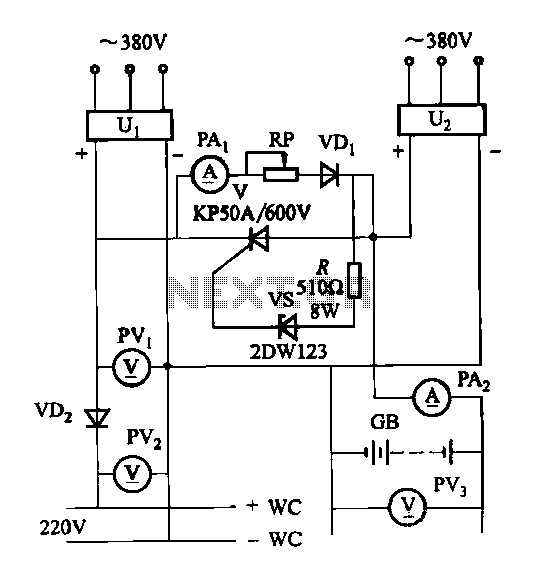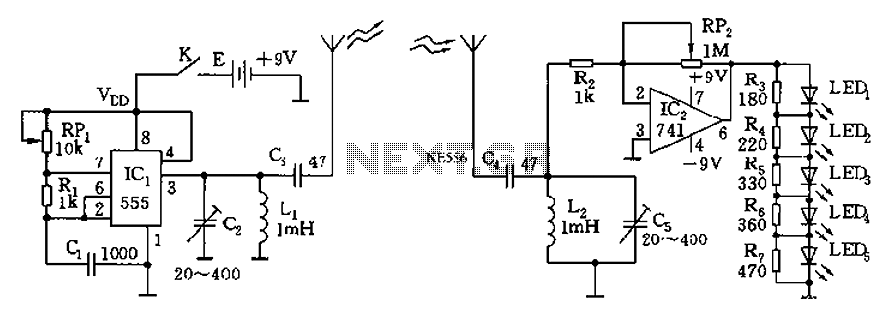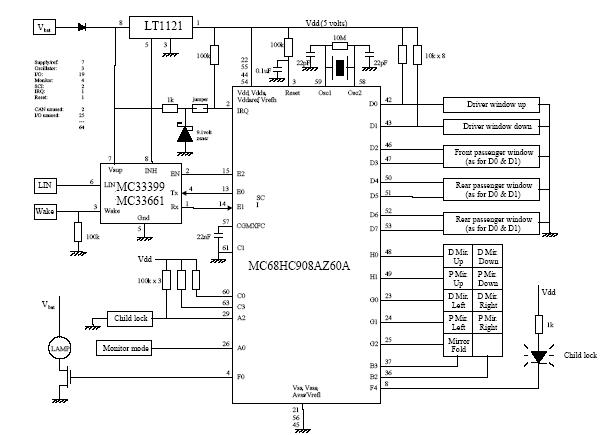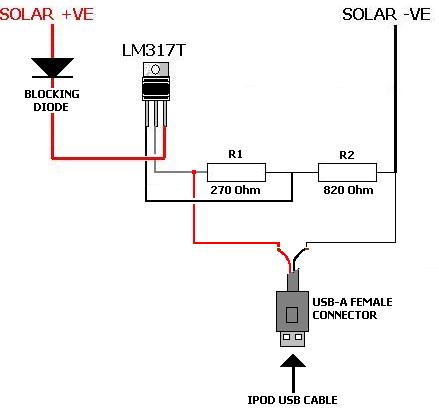
charger for car battery
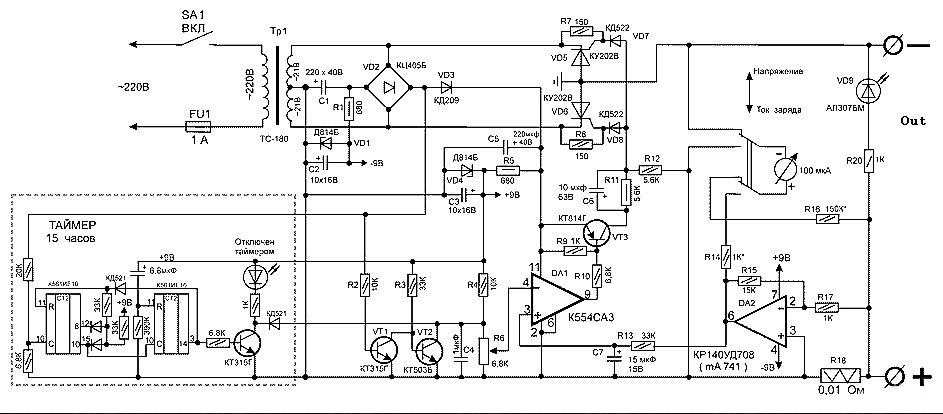
Charger for car battery power supply. Refer to the webpage for an explanation of the power supply-related circuit diagram. The battery charger indicator circuit described above enhances the appearance of a simple battery charger. This circuit serves as a charging indicator for the battery charger, used to check whether the battery is charging or not. The voltage comparator LM393 IC is the core component of this battery charger indicator circuit. The LED (D1) remains illuminated when at least 25 milliamps of current flows to the battery. This circuit is specifically designed for a 12V battery.
The battery charger circuit utilizes the LM393 voltage comparator IC to monitor the charging process of a 12V lead-acid battery. The essential function of this circuit is to provide a visual indication of the charging status, ensuring that users can easily determine whether the battery is receiving charge.
The circuit operates by comparing the voltage level at the battery terminals with a predefined reference voltage. When the battery is connected to the charger, and the charging current exceeds 25 milliamps, the LM393 activates the LED indicator (D1). This LED serves as a simple yet effective way to convey the charging status to the user.
The design incorporates necessary components such as resistors and capacitors to stabilize the operation of the LM393 and ensure accurate voltage comparisons. The use of a voltage comparator allows for precise monitoring of the battery's state, which is crucial for maintaining battery health and preventing overcharging.
Additionally, the circuit can be customized with different reference voltages to accommodate various battery types and capacities. This flexibility makes it a versatile solution for a range of battery charging applications. Overall, this battery charger indicator circuit is an efficient means to enhance battery management systems, providing users with real-time feedback on charging activity.Charger for Car Battery power supply. Go to that page to read the explanation about above power supply related circuit diagram. Description ofbatterycharger indicator: The circuit above willmakeyoursimplebatterychargerlook sophisticated. This circuit is a charging indicator forbatterycharger. Its usedtoche ckwhether thebatteryis chargingornot. VoltagecomparatorLM393 ICis the heartofthis Battery charger indicator circuit. D1LEDstays litwhenthere areat least 25milli-amps of currentwhich flowsto the battery. This circuit isdesignedspecifically for12Vbatterywith. 🔗 External reference
The battery charger circuit utilizes the LM393 voltage comparator IC to monitor the charging process of a 12V lead-acid battery. The essential function of this circuit is to provide a visual indication of the charging status, ensuring that users can easily determine whether the battery is receiving charge.
The circuit operates by comparing the voltage level at the battery terminals with a predefined reference voltage. When the battery is connected to the charger, and the charging current exceeds 25 milliamps, the LM393 activates the LED indicator (D1). This LED serves as a simple yet effective way to convey the charging status to the user.
The design incorporates necessary components such as resistors and capacitors to stabilize the operation of the LM393 and ensure accurate voltage comparisons. The use of a voltage comparator allows for precise monitoring of the battery's state, which is crucial for maintaining battery health and preventing overcharging.
Additionally, the circuit can be customized with different reference voltages to accommodate various battery types and capacities. This flexibility makes it a versatile solution for a range of battery charging applications. Overall, this battery charger indicator circuit is an efficient means to enhance battery management systems, providing users with real-time feedback on charging activity.Charger for Car Battery power supply. Go to that page to read the explanation about above power supply related circuit diagram. Description ofbatterycharger indicator: The circuit above willmakeyoursimplebatterychargerlook sophisticated. This circuit is a charging indicator forbatterycharger. Its usedtoche ckwhether thebatteryis chargingornot. VoltagecomparatorLM393 ICis the heartofthis Battery charger indicator circuit. D1LEDstays litwhenthere areat least 25milli-amps of currentwhich flowsto the battery. This circuit isdesignedspecifically for12Vbatterywith. 🔗 External reference
